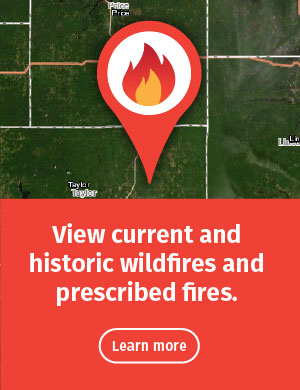Risk of Wildfire by Season
Weather is the single most important factor influencing how fires start and spread. Temperature, wind, humidity and precipitation are the key weather components that determine the daily fire danger. Wildfires can happen just about any time of year, but history has shown how changes in the landscape and seasonal trends greatly impact fire occurrence.
Most wildfires in Wisconsin occur in the spring. This graph shows the average number of wildfires by season in the last 10 years.
Spring
Spring is the most critical fire season in Wisconsin. Shortly after the snow disappears, a dry spring or even a few days in between rains can leave grasses, pine needles and leaf litter very dry, creating hazardous conditions. Warmer temperatures, low humidity and windy days coupled with many landowners conducting spring clean-up around their property by burning yard waste leads to the majority of wildfires.
Summer
In the summer months, when vegetation is green and humidity is elevated, wildfires do not spread as quickly. However, long-term seasonal drought due to a lack of rain can occur and fire occurrence can spike. A common trend is to see fireworks and hot equipment causing many wildfires under these conditions.
Fall
Similar to spring, in the fall when the trees lose their leaves and the ground cover is made up of dry, dead and loose material, wildfires again can be problematic. This critical time period is typically shorter than the spring season, but leaf burning is a common practice in the fall and cooler temperatures lead to outdoor warming fires.
Winter
While the winter months typically bring snow, sometimes areas experience bare ground and with colder temperatures, many people use heat sources such as woodstoves or fireplaces. A common practice is to dispose of ashes in the wildland causing the unexpected wildfire. One might think the safest time to burn debris is when the ground is completely snow covered. While this is true in most cases, some debris fires can holdover and continue to burn for days, even weeks, long after the snow disappears. These fires can easily escape and ignite a wildfire.


